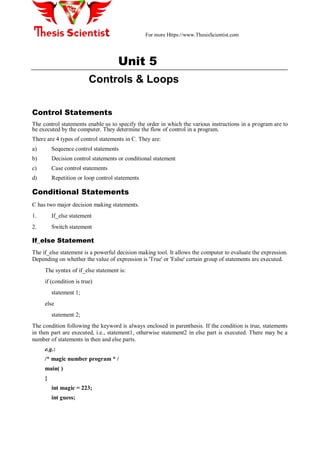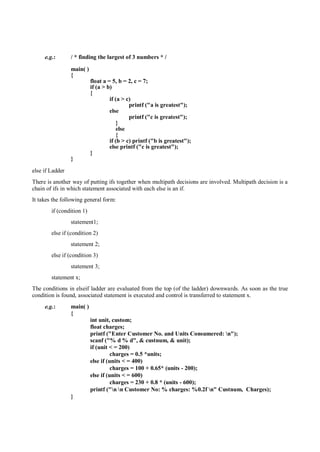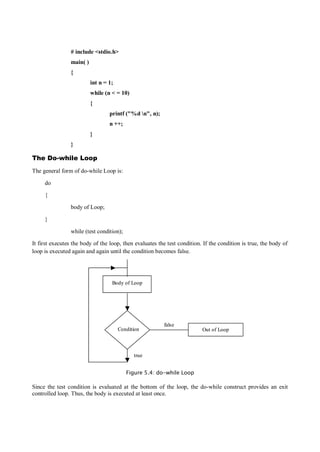The document discusses control statements in C programming, focusing on how they dictate the execution order of instructions. It covers various types, including sequence, decision, case, and loop statements, with particular emphasis on if-else, switch statements, and three types of loops: for, while, and do-while. Additionally, it highlights the use of continue, exit, and goto statements for controlling program flow.









